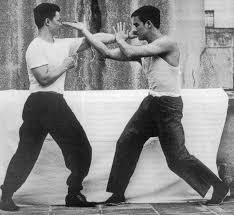Boxing has short range concepts that transition into grappling.
Why do wing chun at all?
I mean if you have to do boxing from other ranges. Then do some sort of stand up grappling system in the clinch.
You could pretty much save yourself a system.
This question comes up periodically, so I thought I'd explain my perspective as someone whose primary base is BJJ/Muay Thai/Western Boxing but who has gotten some value from supplemental training in Wing Tsun.
For the record, I am far from an expert in WT/WC. I've got less than two years of Wing Tsun training under my belt, from @yak sao and his students plus a couple of seminars with his instructors. I can spar functionally using pure WT against practitioners of other styles, but am far less effective than when I use my normal personal style. I also can occasionally slip in little moments of WT when I am sparring with my normal structure.
What's made WT useful for me is that it has helped me improve my non-WT arts by making me more aware of certain subtleties of body mechanics. Interestingly enough, I discovered these subtleties mostly while investigating the things that WT does "wrong" from my normal perspective. How can a WT practitioner maintain forward pressure while holding a back-weighted stance? Why would you even try that in the first place? How can a WT practitioner have any kind of effective punching power while not using hip rotation?
As I found the answers to such questions, I realized that I could apply the relevant principles to my normal BJJ/Boxing/Muay Thai and make my body mechanics even more effective.
Once I learned to recognize the principles in play, I realized that plenty of high-level boxers, etc, do use those same elements. The difference is, I've never seen those details explicitly taught in western boxing. I believe some talented fighters just figure them out unconsciously through years of training and fighting. Since I'm not so talented and have never fought professionally, it helped to have another avenue to figure them out.

